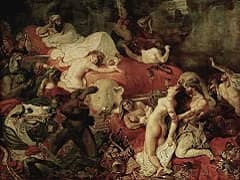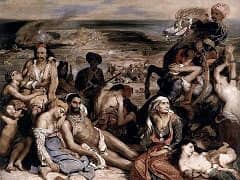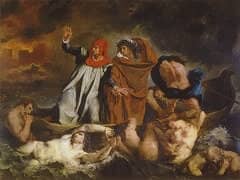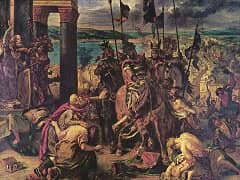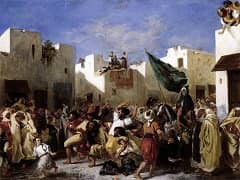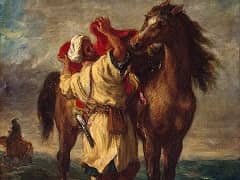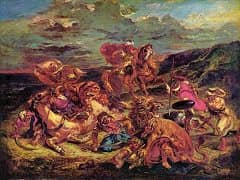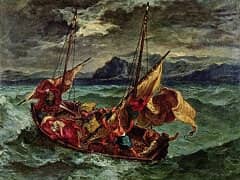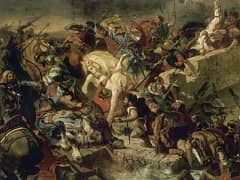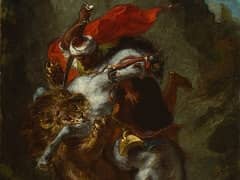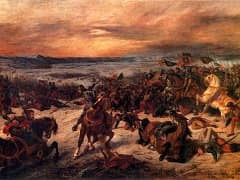Entry of the Crusaders in Constantinople by Eugene Delacroix

Entry of the Crusaders in Constantinople illustrates an episode of the Fourth Crusade (1202-4), organized under the impetus of Pope Innocent III. Turned away from their original goal - the
reconquest of the Holy Places which had been occupied by the Moslems since 1187 - the Christians, under the leadership of Count Baldwin of Flanders and the doge of Venice, Dandolo, seized
Constantinople, at the request of the emperor, Isaac II Angelus, who had been dethroned and whom they restored to power in July, 1203. A revolt forced them to lay siege to the city a second time,
and they sacked it on April 12, 1204. The territory was broken up and divided among the Crusade leaders, with Baldwin placed at the head of the ephemeral Latin Empire that lasted until 1261.
We can measure here the path traveled by the artist in twenty years, since The Massacre of Chios of 1824. As against scenes of pillage and carnage, Delacroix here preferred to depict the moment
when the weary warriors pause in the face of supplications and death, when violence begins to abate, and order is about to be restored. A concern for balance dominates the composition, built of
groups given rhythm by the vertical lines; an obvious suggestion of Veronese's The Marriage at Carta reappears in the noble architecture of the columned portico at the left. It is moreover from
the Venetians that Delacroix learned this sumptuousness of expressive color, this sense of living light which floods the whole canvas and especially the wonderful background landscape of
Constantinople lying along the blue waters of the Golden Horn and the Bosphorus.


